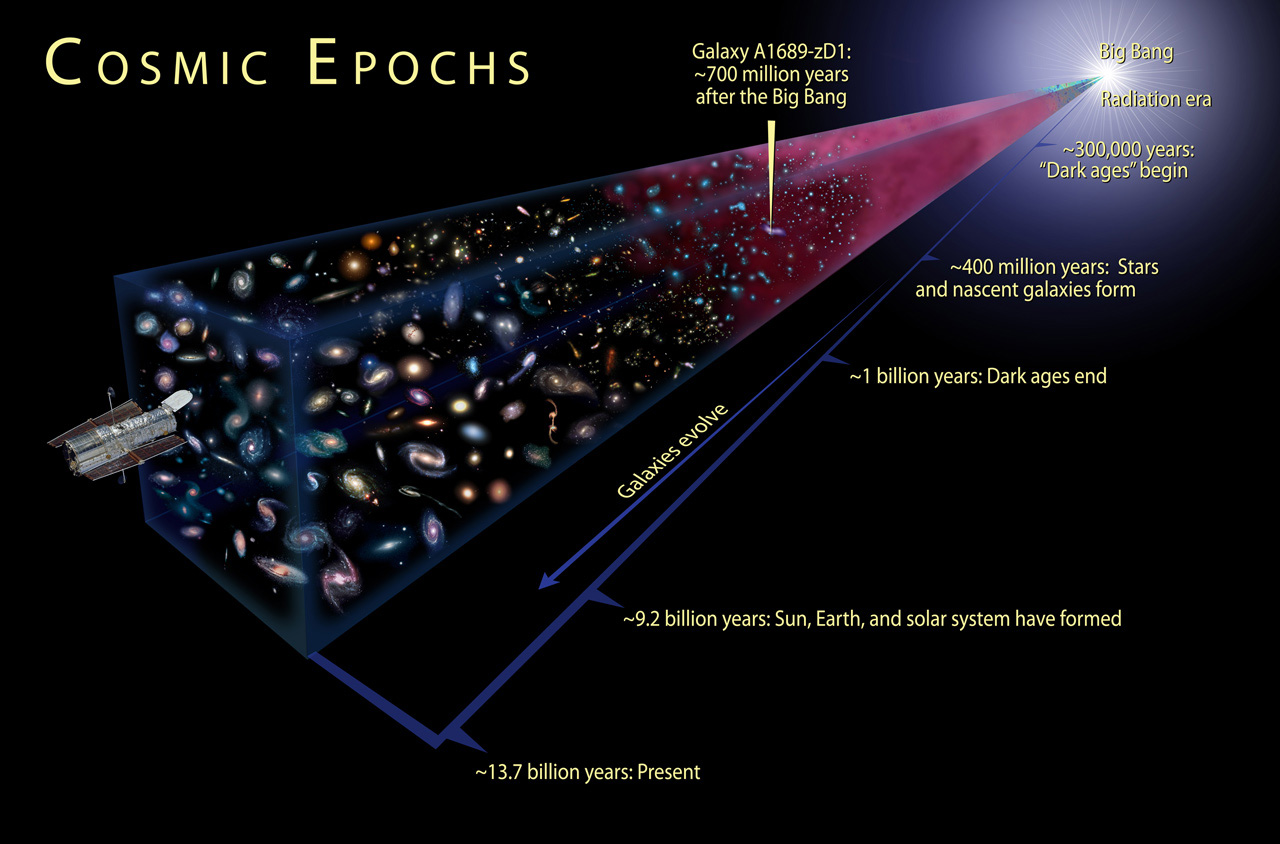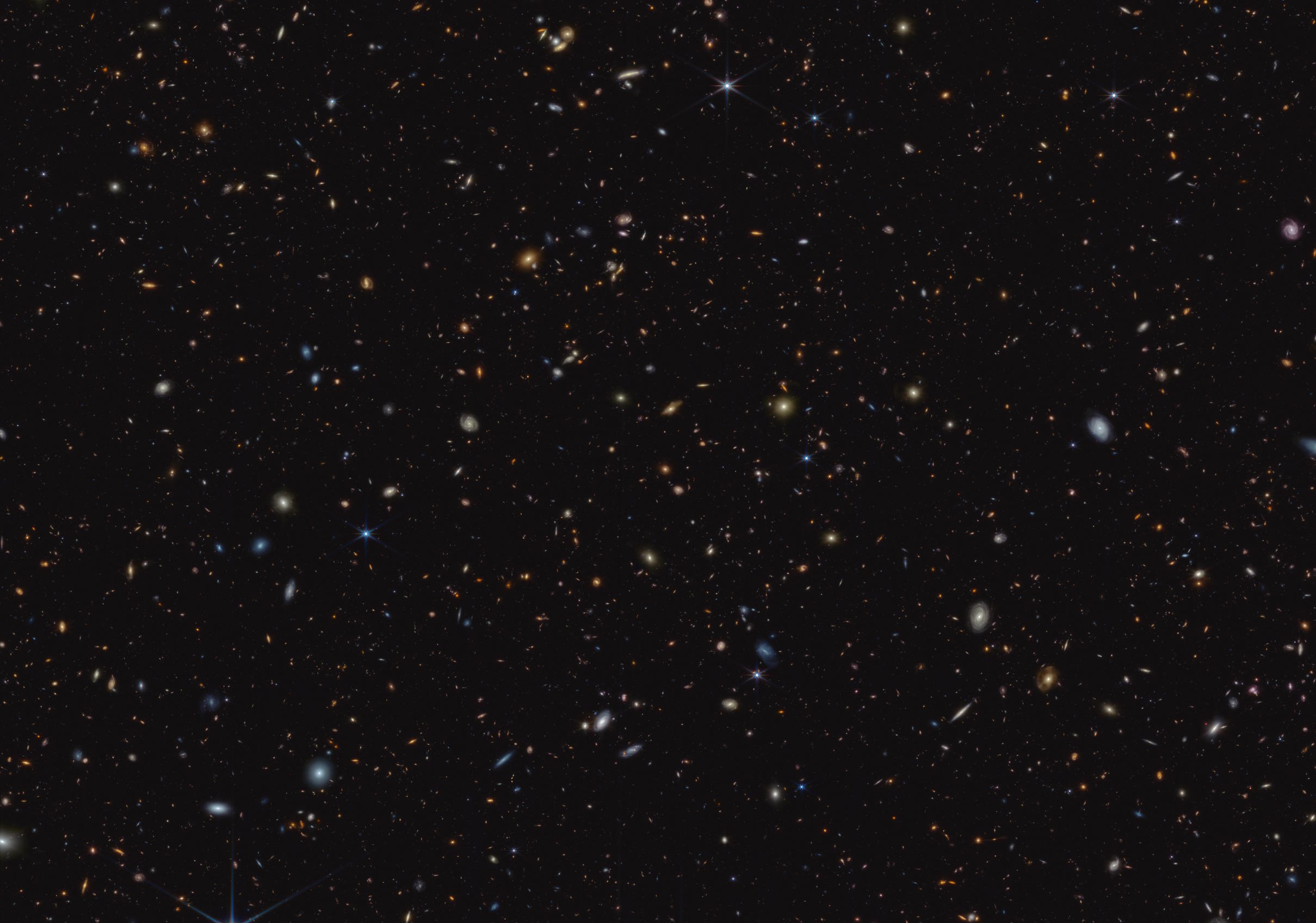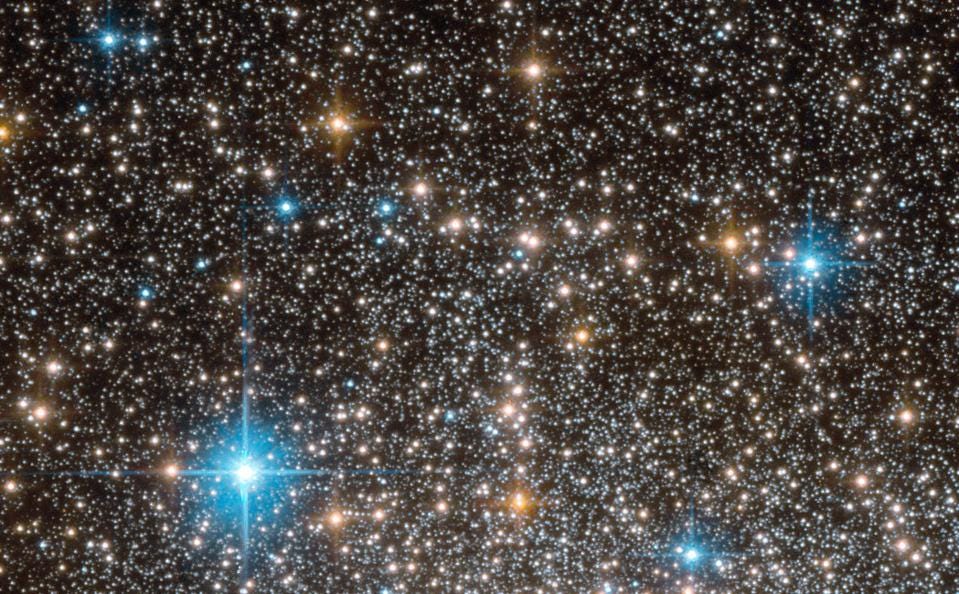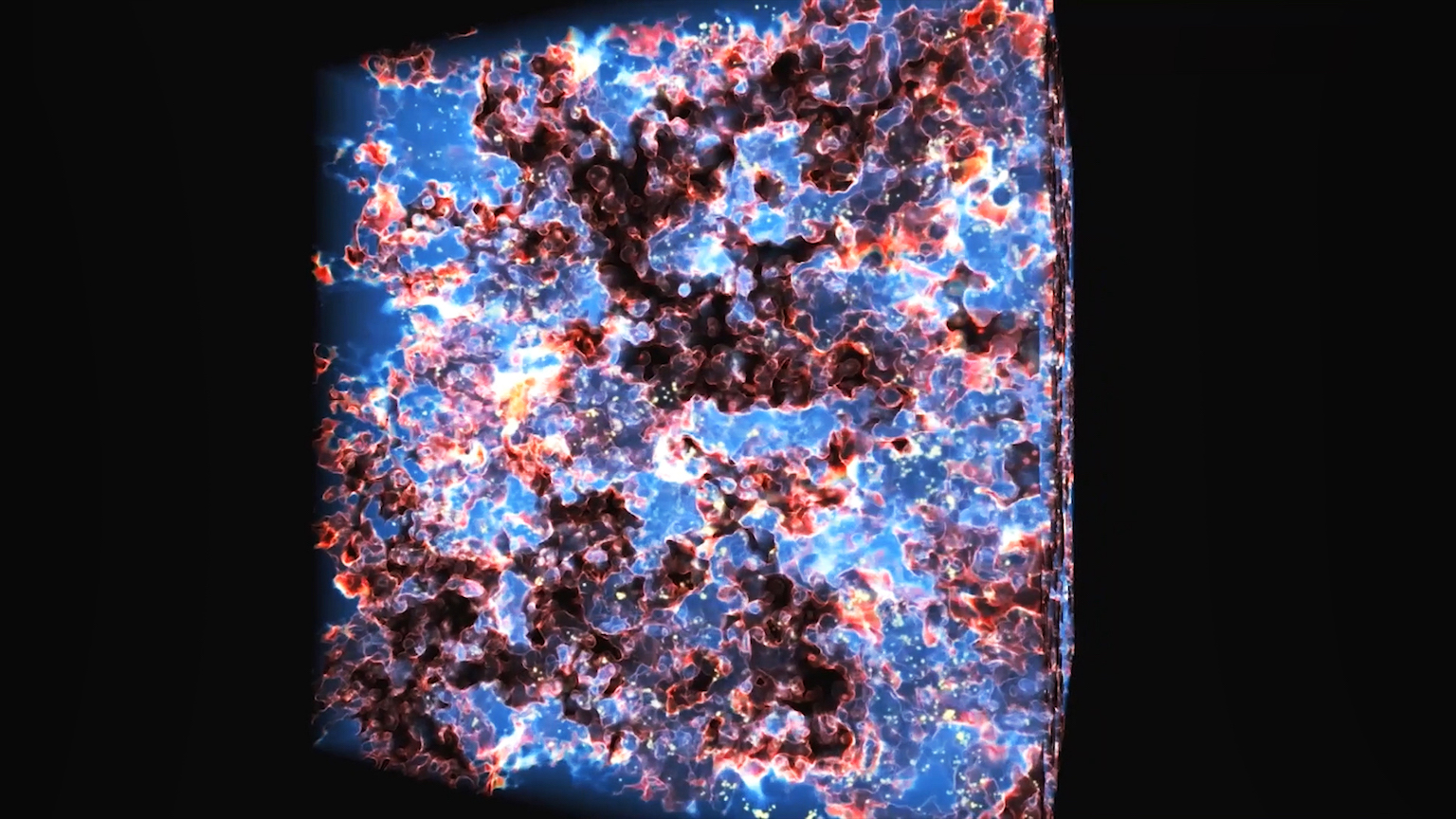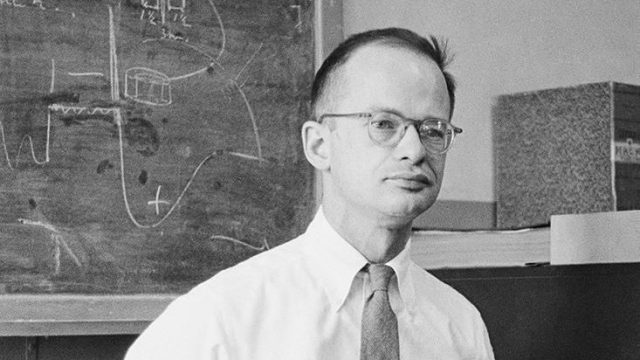How “Zelda: Tears of the Kingdom” explains cosmic reionization
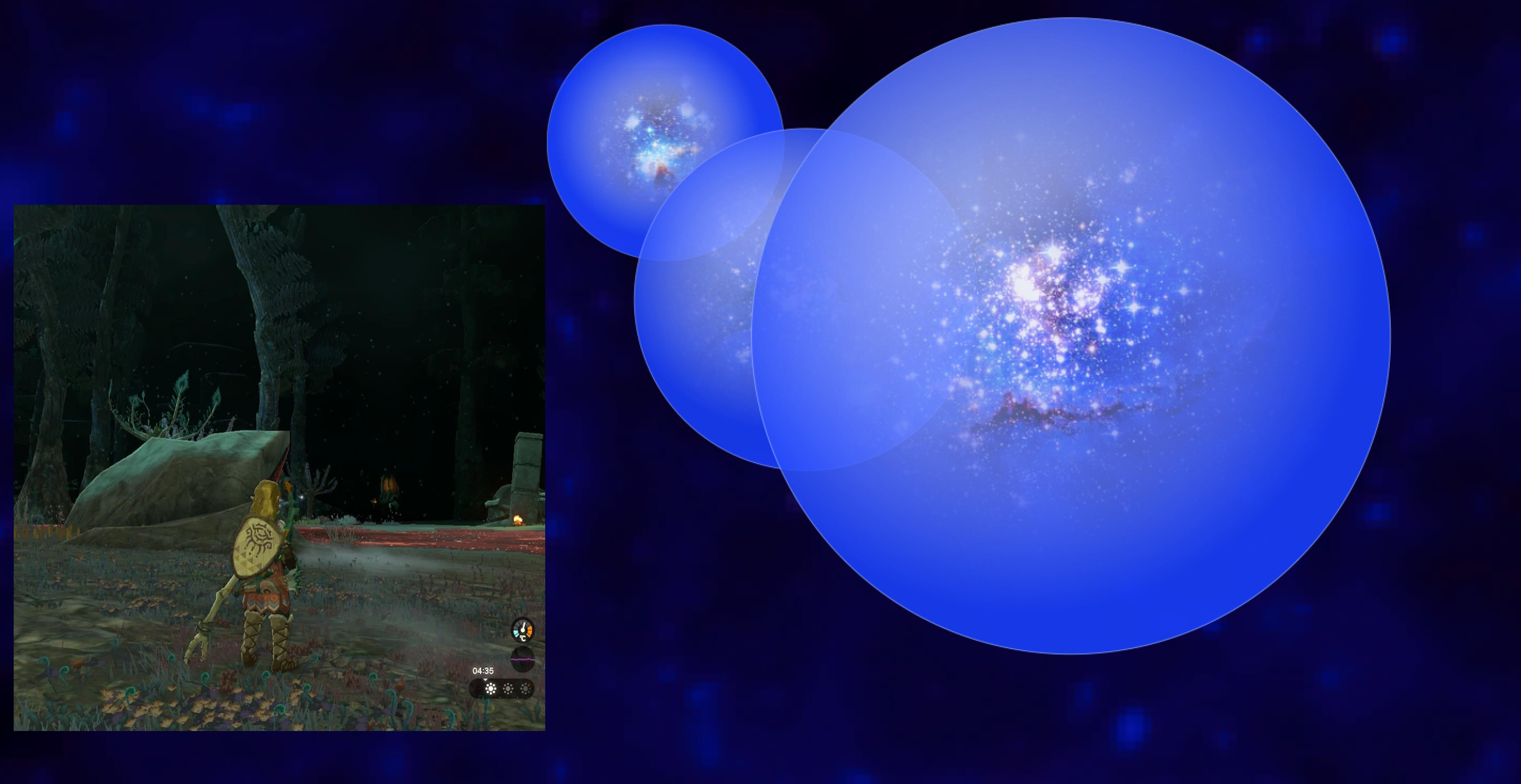
V. Tilvi et al./NOIRLab/KPNO/AURA (main)
- Cosmic reionization is the slow, gradual process by which the neutral atoms formed in the Universe after the hot Big Bang become transparent to light, only in the aftermath of long periods of star-formation.
- In the new Nintendo Switch game, Zelda: Tears of the Kingdom, there’s a dark, subterranean expanse known as the “depths,” that’s reminiscent of this early, dark period in our cosmic past.
- Although the ways to illuminate Hyrule’s darkness involve luminous Brightbloom Seeds and brilliant Lightroots, the analogy to early stars, galaxies, and the reionization of the neutral matter in the Universe offers an incredible educational opportunity.
When the Universe as we know it began with the hot Big Bang, it was filled with all sorts of energetic particles, antiparticles, and quanta of radiation: a primordial soup of the cosmos. Over time, it expanded and cooled, finally becoming cool enough to produce stable, neutral atoms after a few hundred thousand years had passed. Although the earliest stars and galaxies likely formed within the first ~150 million years of this cosmic history, the Universe remained largely dark and opaque to light until an impressive ~550 million years would pass, as the neutral atoms formed much earlier are remarkably effective at blocking optical wavelengths of light. It’s only through the gradual, slow process of cosmic reionization that the Universe became transparent to light at all.
Although novel observatories like the James Webb Space Telescope (JWST) are teaching us an incredible amount about cosmic reionization, there’s a remarkably good analogy that can help everyone understand it: the newest installment in the Legend of Zelda video game series, Tears of the Kingdom. Beneath the main kingdom of Hyrule is a dark, subterranean expanse known as the “depths,” and it’s exactly these depths that can teach us so much about the process of how cosmic reionization renders the Universe transparent to visible light.
Although we’re still attempting to understand many of the details in the story of how the Universe grew up, the broad strokes are very well-established already. We know that, after starting from a hot, dense, mostly uniform state, it expanded and cooled, while gravitating all at the same time. There are regions that are born slightly denser than the cosmic average, and regions that are born slightly less dense than average. The denser regions, as the Universe evolves, gradually draw more and more matter into them, while the less dense regions give up their matter to their relatively denser surroundings. Over time, this leads to the growth of large-scale structure: what will eventually become stars, galaxies, and large groups and clusters of galaxies all bound together.
But when the first stars form from the collapse of gas and matter, they’re surrounded by large numbers of neutral atoms in all directions. Even though the stars themselves, once they’ve ignited nuclear fusion in their cores, emit large amounts of ionizing ultraviolet radiation, there’s simply too much neutral matter for them to punch through these dark surroundings. The light can only create an ionized “bubble” that extends for a certain distance away from the stars, before all the rest is absorbed — or, as astronomers say, extincted — by the neutral matter in intergalactic space.
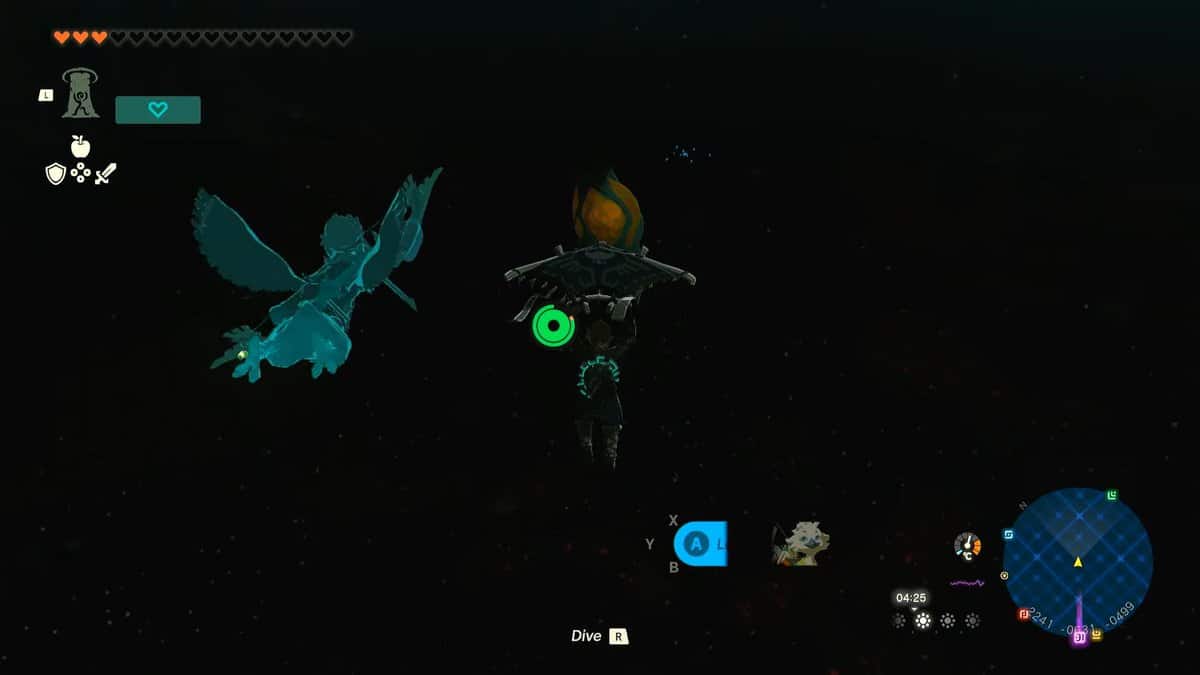
Similarly, when Link, the protagonist of the Zelda series, first descends into the depths of Hyrule, he finds himself alone in a dark abyss, where he cannot see anything around him, including the hands in front of his own face. Sure, there are all sorts of hazards down there in the depths (that, to be fair, aren’t present in the early Universe), but Link has a key tool in fighting this darkness. One of the early items Link encounters and can collect are known as Brightbloom Seeds, and they come in two varieties: normal and giant.
Link’s initial location can be thought of as analogous to the location of the very first region of space that becomes gravitationally dense enough to form stars for the first time, and the Brightbloom Seeds behave like those first, massive, luminous stars. Although they can only illuminate a short distance around Link, this is a perfect analogy for the early Universe, as this light-blocking neutral matter keeps everything obscure beyond these small, reionized bubbles where ultraviolet light has kicked the electrons off of these otherwise light-blocking neutral atoms.

There are two paths available to Link after he descends into the depths and explores what’s around him for the very first time.
- He’s free to leave the depths at any time, simply by transporting himself away back to mainland Hyrule (or into the sky).
- Or, alternatively, Link can continue exploring the depths until he encounters a giant light just waiting to be activated: a structure known as a Lightroot.
If Link leaves the depths, he’ll find that when he returns to the depths later on, every region that he had previously illuminated by planting normal and giant Brightbloom Seeds has reverted to becoming dark again. All of those Brightbloom Seeds that had been planted previously are now gone, with nary a trace.
For the very first stars that form in the Universe, this is a perfect analogue. If you have a region of space, early on, where stars first form and then star-formation ceases, the surrounding atoms that were ionized weren’t “blown away” into the abyss of intergalactic space, but rather remained ionized: with bare atomic nuclei and free electrons floating around. Once the majority of that ultraviolet light goes away — which must happen when the most ultraviolet-rich, massive, short-lived stars run out of fuel and die — those nuclei and electrons find one another again, recombining into neutral atoms once again. Although a smaller “core” of long-lived stars should still survive, preventing the region from becoming completely neutral, most of what had been illuminated previously can return to darkness in exactly this fashion.
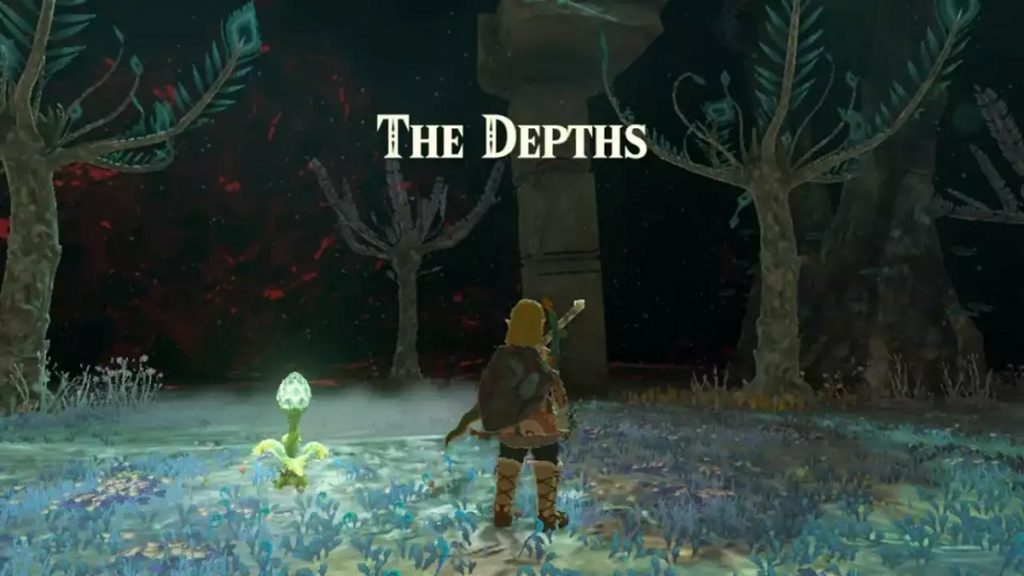
However, Link will also find, lurking in the depths of Hyrule, artifacts known as Lightroots. These Lightroots, when you activate them, behave as powerful, sustaining lights; they illuminate the darkness for a large region centered on where they’re located. It supersedes any Brightbloom seeds in its location, and simply blasts the darkness away entirely for a large, roughly spherically symmetric region around them. Link can even venture into the darkness away from the Lightroot for quite a distance and still have the illuminated Lightroot be visible. And, upon transporting away and returning, Link finds that the Lightroot’s light remains undiminished over time.
There’s an analogy for this in cosmology as well: a Lightroot is like a brilliant, massive, early galaxy that continues to grow and form bright stars continuously, over long periods of time. These brilliant sources of light output large amounts of radiation across the electromagnetic spectrum, including in the ultraviolet, and that output remains undiminished or even grows over time, as many star-forming regions in the early Universe are thought to do. This winds up creating a large, sustained “bubble” of ionized material surrounding them, and these bubbles continue to grow even as the Universe itself expands. It’s only beyond the edges of these bubbles are there more light-blocking neutral atoms to be found, with the bubble continuing to slowly creep outward as the Universe continues to expand and evolve.

But what happens if Link is far away from an activated Lightroot, and looks back toward it? The two ways to find out, in Tears of the Kingdom, are to have Link either travel, on foot, to a region that’s well outside of the bubble illuminated by the Lightroot, or, after leaving the depths, to descend back into it in a different location. If you look away from the direction of the illuminated Lightroot, as you might expect, everything appears dark again. However, depending on how far away Link is from the Lightroot(s) that has/have been activated, when he looks back in the direction of the Lightroot, he might be able to make out where it is and what its properties are. The farther he is from it in the darkness, the fainter it appears and the harder it is to make out.
This is something that we, too, notice, when we observe objects present in the ultra-distant Universe, when that light-blocking neutral matter is still present. Our ability to see these luminous objects, even though they’re intrinsically very bright, depends on how thick the veil of light-blocking neutral matter is between us along our line-of-sight. Some of the brightest, most distant objects that have ever been seen are only observable by JWST, which is optimized for seeing infrared light, but a few of those objects are still within reach of our powerful optical telescopes, such as Hubble. This light-blocking neutral matter is only capable of partially absorbing the light along its journey, and it’s the total amount of neutral matter in between a luminous source and ourselves — the eventual observer — that determines how severe the extinction of that light is.
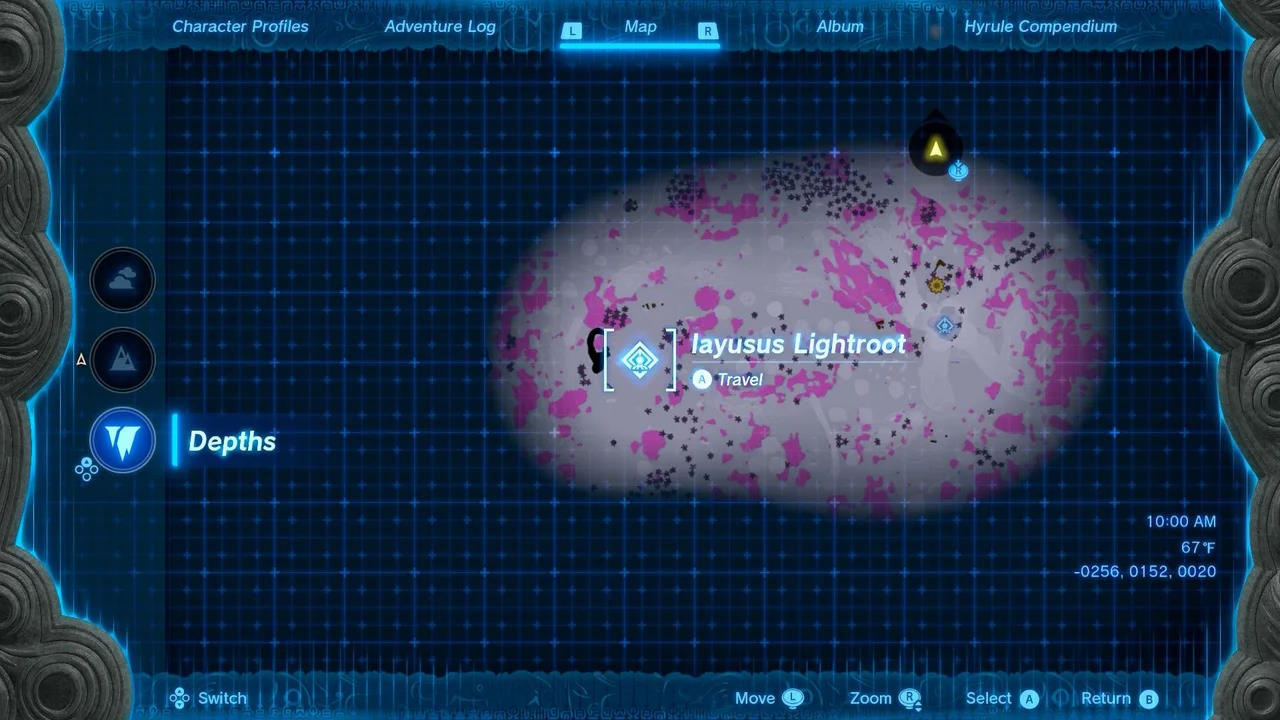
Over the course of a typical adventure, Link will descend into the depths in a variety of locations, planting Brightbloom Seeds and Giant Brightbloom Seeds wherever the darkness is present, until he reaches and activates the Lightroots where he finds them, which then dispels the darkness surrounding them. But, because Link can only be in one place at a time, these “blips” of light that appear and dispel the surrounding darkness appear in clumps and clusters. First, the light illuminates the darkness in one place, then nearby in other places, and then, separately (after Link leaves the depths), elsewhere: wherever Link happens to descend into the depths next.
Over time, this winds up creating a “swiss cheese” structure of light within the depths, with the light from adjacent Lightroots teaming up to become stronger than either Lightroot would be independently. The activation of multiple nearby Lightroots further brightens the surroundings near all of them, often bringing the light to regions that one might not have expected. If there are dark regions that are difficult to access or unactivated Lightroots surrounded by active Lightroots, these regions can remain dark even though their surroundings have been illuminated for a long time. These dark regions can persist even into very late stages of the game.
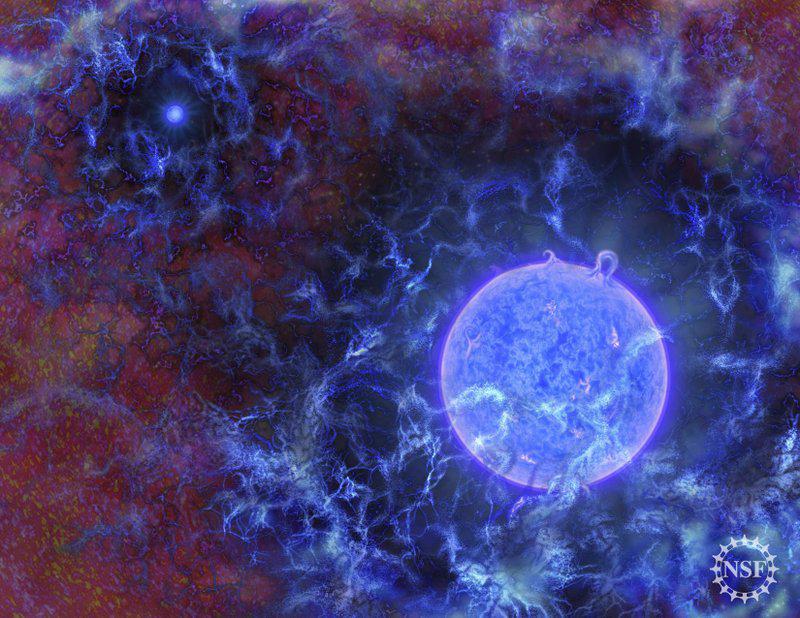
Although there are often stars forming in various regions of space simultaneously within the expanding Universe, the “swiss cheese” structure that appears during reionization is extremely analogous to how the depths become illuminated over time in Tears of the Kingdom. Wherever stars form and continue forming, often growing via mergers and accretion into galaxies, these reionized bubbles appear. Even though the Universe is expanding, these bubbles are growing as well, plus more — new ones — are appearing wherever star-formation is triggered from pristine material for the first time.
Of course, the depths beneath Hyrule don’t expand, so we have to scale the expansion out if we want to compare the two scenarios, but we find the same general features.
- Where two star-forming regions appear close to one another, their reionized bubbles will overlap, enabling the ultraviolet photons from each region to travel greater distances, leading to a larger, ever-growing bubble surrounding them both.
- Where small bubbles of reionization get overtaken by larger ones, the larger one dominates, but the small one still contributes a little.
- And as new sources of light appear, the early bubbles are joined by later bubbles, eventually growing so large that the majority of the surroundings become illuminated.
In the Universe’s case, where reionization completes, the Universe becomes completely transparent to light of all wavelengths, including visible light.
However, there is a major, important difference between the depths of Hyrule and the reionizing Universe that goes beyond needing to scale the expansion of the Universe out and the need to recognize that multiple “illuminating” events occur simultaneously in different locations.
Over time, the depths of Hyrule become further and further illuminated, with older Lightroots never deactivating while the new Lightroots are turned on, eventually leading to a completely lightened map, driven by the Lightroots exclusively: the brightest sources of light that are out there.
In the actual Universe, however, we don’t expect this to be the case. Whereas in Tears of the Kingdom, it’s the Lightroots and not either the giant or normal Brightbloom Seeds that wind up illuminating the entirety of the depths, in the actual Universe, it’s the total flux of ultraviolet light that matters, irrespective of its source. Although the JWST (and other observatories) are best at revealing the absolute brightest light sources that are out there, it’s expected that the overwhelming majority of ultraviolet photons — at least 80% and up to 95% — are produced by smaller structures: star clusters and little galaxies, rather than the giant behemoths that produce the greatest amount of radiation. Part of the science goals of JWST and other modern observatories are to understand precisely how galaxies of various sizes and luminosities come to, eventually, fully reionize the Universe.

If one plays Zelda: Tears of the Kingdom comprehensively enough, they can find every Lightroot in the depths, which will eventually reveal the entire subterranean map. Similarly, if a sufficient amount of time passes so that enough stars and galaxies have formed — leading to the emission of a sufficiently large number of total ultraviolet photons — the Universe eventually becomes entirely reionized, where every location and direction becomes transparent to visible light. It takes approximately 550 million years for most regions of the Universe to become free of neutral, light-blocking atoms, but the last vestiges of pristine material, as isolated as possible from star-forming regions, appear to persist until approximately 2 billion years after the hot Big Bang.
Although reionization is a difficult area of study for most laypersons, and even some professionals, to understand in detail, the year’s best video game can help. In science, as in video games and in life, a headfirst plunge into the darkness is often terrifying and daunting when it first occurs. However, if you spend enough time down there, you’ll frequently discover that there are lights to be found, and they’ll come to illuminate your understanding of all that’s going on around you. Remember that the depths of Tears of the Kingdom are only an analogy, and learn where the analogy departs from the Universe itself, and you might just discover that your comprehension of how the Universe becomes transparent to light is more accessible than ever before.
